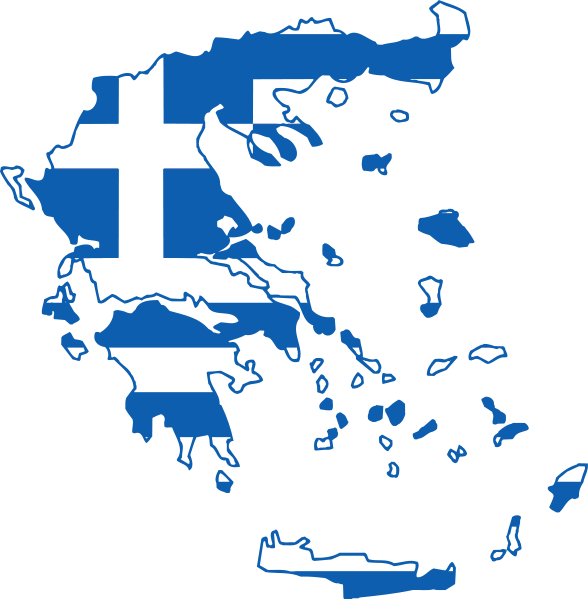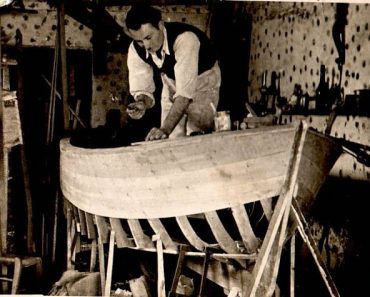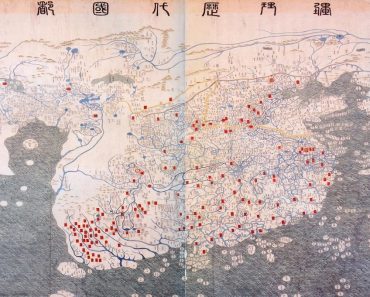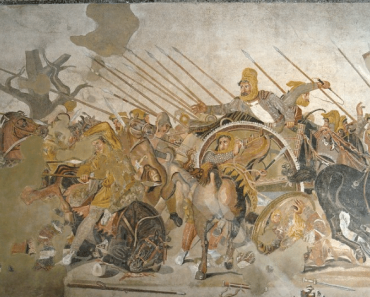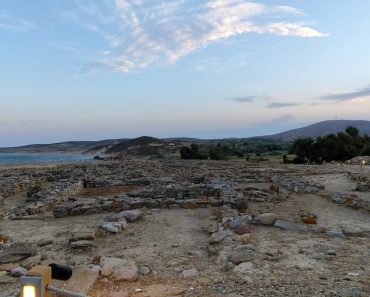The Minoans didn’t leave behind written myths that we can read yet, but they did leave vivid traces of their civilisation, uncovered through archaeological excavation – frescoes, palaces and religious artefacts – which suggest a culture fascinated by bulls, performance and the symbolism of power. So, although the Minotaur is a creature of ancient Greek storytelling, it’s a fascinating reflection of the people and cultures that inspired it.
Who were the Minoans?
The people that we now call ‘Minoans’ were a sophisticated maritime society based on Crete, whose influence peaked between 2000 and 1450 BCE. They built monumental palaces, the largest of which was at Knossos, and developed advanced systems of administration, plumbing and trade.
They traded widely across the eastern Mediterranean, from Egypt to the Levant, and left behind striking art filled with natural imagery, ceremonial scenes and athleticism.
Their name, however, is modern – and Greek in origin.
“The term Minoans actually comes from the ancient Greeks,” explains Professor Adams. “The ancient Greeks set this story up for us about the Minoans, and this term comes from their King Minos of Greek myth.”
Therefore, it was mere centuries after the Minoan civilisation had disappeared that the ancient Greeks retroactively named them after the mythic King Minos – ruler of Crete and father of the Minotaur.

A monster born of divine punishment
According to the myth, King Minos was the son of Europa, a Phoenician princess. She was abducted by Zeus, the King of the Gods (who appeared in the form of a bull) and carried across the sea to Crete. The union between god and mortal, in classic mythological fashion, was not consensual. Minos inherited the throne of Crete and soon found himself in conflict with the gods.
“At some point,” explains Professor Adams, “King Minos was obliged to sacrifice a very special bull to Poseidon, God of the sea, and he didn’t do so and therefore deserved to be punished.”
Poseidon’s punishment for King Minos for refusing to sacrifice the bull was as bizarre as it was brutal. Rather than targeting Minos directly, Poseidon cursed Minos’s wife, who was called Pasiphaë.
“The punishment was a slightly unusual one,” Adams continues, “in that King Minos’s wife Pasiphaë fell in love with a bull and disguised herself as a heifer in order to have sex with the bull. And they produced the Minotaur. So, this was a sort of monstrous hybrid that she gave birth to, and was hidden away in the labyrinth of Knossos.”
It might be a complicated – and to modern eyes, confusing – story. But it fits within the tradition in ancient Greek myth of conflict between the humans and the gods, filled with animalistic imagery.
The labyrinth itself, said to have been built by the ingenious inventor Daedalus, was a vast maze constructed beneath the palace at Knossos. There, the Minotaur was imprisoned, a living emblem of divine wrath and royal shame. This version of the story reflects Greek moral anxieties about pride, punishment and the limits of human power – as Daedalus’ son Icarus found when trying to escape the maze, later in the mythology.
The myth isn’t Minoan – but the bull obsession was
While it’s easy to assume that the myth of the Minotaur emerged directly from Minoan religious practice, Adams clarifies that this isn’t the case.
“This is an ancient Greek myth, not a Minoan myth,” she says. “It’s a first millennium BC myth: the Minotaur, coming after the Minoans.”
The Minoans left behind no known literary texts that explain their beliefs, and their main script – known as Linear A – remains undeciphered. But while the Minotaur itself is a later Greek invention, the obsession with bulls does go back much further, and can be traced to the Minoans.
“We don’t know what the Minoans made of the Minotaur, but there are some depictions of the half-bull, half-man figure,” Adams notes. “But they date to the Mycenaean period, so slightly later.”
“We are not sure that the Minoans themselves have this Minotaur myth,” she adds, “but they were obsessed with the bull figure and particularly at Knossos.”

Why bulls?
In Minoan art, bulls appear everywhere – charging across frescoes, cast in bronze, carved into vessels. The most iconic scene is that of bull-leaping: a practice in which young people are depicted grasping the horns of a bull and somersaulting over its back. It appears to have been a ritual or elite sport, though its precise meaning is still debated.
Ritual vessels shaped like bulls’ heads, called rhyta, have been found in elite contexts, further suggesting that bulls played a role in Minoan religious ceremonies. Even the palace architecture itself features stylised bull horns, sometimes referred to as “horns of consecration.”
This reverence may reflect the bull’s symbolic power as a fertility figure, a source of strength, or a divine intermediary. In fact, across ancient civilisations, even tracing back to the Mesopotamians, bulls are a recurring symbol in mythology and culture that link the human world to the divine.
How the Minoan civilisation is remembered in myth
The Minoans vanished from history around 1450 BCE, possibly because of natural disasters and conquest by the Mycenaeans, the Greek-speaking people who dominated the mainland and eventually Crete. But while the society collapsed, its memory endured.
Soon afterwards, relatively speaking, Greek myth absorbed fragments of this vanished world – the grandeur of Knossos, the sacred bull, the sense of ancient mystery – and reassembled them into the story of the Minotaur. That myth would echo across the centuries, from classical Athens to modern interpretations, its meaning evolving with each retelling.
In recent years, new interpretations of the Minotaur have emerged.
“What’s happening at the moment is that the Minotaur is being presented as a sort of misunderstood, neurodiverse figure who was actually created monstrously or as a monster because of being misunderstood,” says Adams.
“I think this is a very interesting way in which the past can help us articulate our changing values now.”
This article is based on an interview with Ellen Adams, speaking to David Musgrove on the HistoryExtra podcast. Listen to the full conversation.
Roman Britain | A short course from HistoryExtra Academy
Member exclusive | In this four-week course, discover everything you need to know about Roman Britain, guided by Rob Collins, professor of frontier archaeology at Newcastle University.

